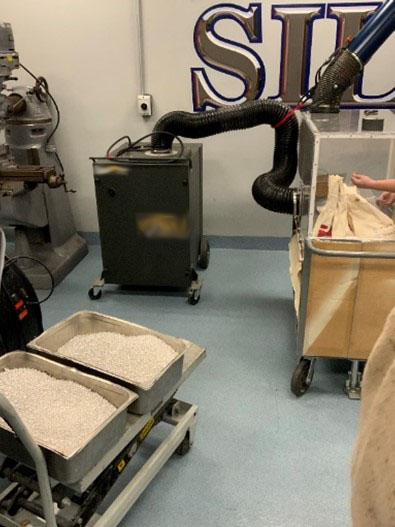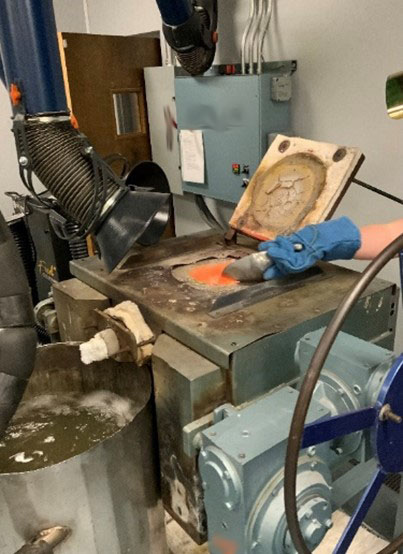Controlling Silver Exposure at a Company that Manufactures and Distributes Metals
In 2019, a company that manufactures and distributes metals invited the Connecticut Department of Labor’s On-Site Consultation Program (CONN-OSHA) into its facility after hearing them present at an association conference. During the on-site review, the CONN-OSHA team looked at the company’s manufacturing operations and written documentation. In addition, they tested for noise and air quality.


After the first visit, the consultants documented 39 items that the company needed to address. Many of the items involved improving documentation. In addition, machine guarding and forklift improvements were needed. The company addressed these items in a short period of time. The final item that needed attention was the level of silver in the air. The Permissible Exposure Limit (PEL) for silver is very low and that makes it challenging to reduce air levels below the PEL. OSHA’s Air Contaminants Standard (29 CFR 1910.1000) establishes an 8-hour PEL time weighted average of 0.010 milligrams per cubic meter (mg/m3) of air for silver.
The CONN-OSHA team visited multiple times and the health consultant collected task specific breathing zone air samples to measure the levels around the room to help identify the source of the contamination. After narrowing the sources to three specific tasks, the company was able to implement both procedural changes and engineering controls. Simple things like where employees stood, the direction of a torch and body positioning when completing a task were part of the solution. In addition, the company introduced a permanently installed local exhaust system with high end heat resistant arms that could reach out to multiple areas. This unit, coupled with a portable local exhaust system, was used to reduce workers’ exposure to silver during the targeted tasks. (See pictures.)
In 2021, after the controls were implemented, CONN-OSHA documented that the air levels of silver had dropped from 0.087mg/m3 (almost 9 times the PEL) to 0.0036 mg/m3, less than the PEL.
Working with CONN-OSHA was a positive experience for the company. According to the facility’s senior management representative, “OSHA is a scary world as it is a complex and unknown arena to many. What we found using CONN-OSHA was interesting. These folks are here to help business understand OSHA, interpret what’s needed, answer questions, as well as provide technical direction. To correct the items CONN-OSHA uncovered cost us approximately $60,000. In the end, we used our dollars to address these issues instead of paying fines if OSHA had come for an inspection. We definitely plan to use CONN-OSHA again in the future.”
OSHA On-Site Consultation Program offers no-cost and confidential occupational safety and health services to small and medium-sized businesses in all 50 states, the District of Columbia, and several U.S. territories, with priority given to high-hazard worksites. Consultants from state agencies or universities work with employers to identify workplace hazards and how to fix them, provide advice for compliance with OSHA standards, train and educate workers, and assist in establishing and improving safety and health programs. On-Site Consultation services are separate from OSHA enforcement efforts and do not result in penalties or citations. To locate the OSHA On-Site Consultation program nearest you, call 1-800-321-OSHA (6742) or visit www.osha.gov/consultation.


